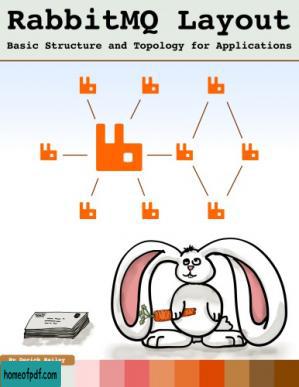RabbitMQ Layout: Basic Structure and Topology for Applications
该资源由用户: 梦凝小哥哥 上传 举报不良内容

尊敬的读者:
欢迎您访问我们的网站。本站的初衷是为大家提供一个共享学习资料、交换知识的平台。每位用户都可以将文件上传至网盘并分享。
然而,随着用户上传的资料增多,我们发现部分不宜或版权问题的书籍被分享到了本站。
为此,我们已经关闭了分享入口,并进行了多次书籍审查,但仍有部分内容未能彻底审查到位。
在此,我们恳请广大读者与我们共同监督,如发现任何不宜内容,请 点击此处 进行举报,我们会第一时间处理并下架相关内容。
希望我们能共建一个文明社区!感谢您的理解与支持!
猜你喜欢

Identity-Native Infrastructure Access Management - Ev Kontsevoy, Sakshyam Shah, and Peter Conrad
View more
Identity-Native Infrastructure Access Management - Ev Kontsevoy, Sakshyam Shah, and Peter Conrad

《风俗与历史观》岸本美绪典藏版
View more
《风俗与历史观》岸本美绪典藏版

《345薪酬:提升人效跑赢大势》李祖滨, 汤鹏, 李志华 文字版
View more
《345薪酬:提升人效跑赢大势》李祖滨, 汤鹏, 李志华 文字版

《镜前镜后》林青霞全新版
View more
《镜前镜后》林青霞全新版

《无尽世界(全三册)》肯·福莱特
View more
《无尽世界(全三册)》肯·福莱特

《红项圈》 让-克利斯托夫·吕芬文字版
View more
《红项圈》 让-克利斯托夫·吕芬文字版

《彩图全解世说新语》刘义庆
View more
《彩图全解世说新语》刘义庆

Beginning ASP.NET 4.5.1 in C# and VB - Imar Spaanjaars
View more
Beginning ASP.NET 4.5.1 in C# and VB - Imar Spaanjaars

《英雄与恶徒》安吉拉·卡特
View more
《英雄与恶徒》安吉拉·卡特

Getting to Know Intellij IDEA - Trisha Gee and Helen Scott
View more
Getting to Know Intellij IDEA - Trisha Gee and Helen Scott

《深度思考》川上浩司文字版
View more
《深度思考》川上浩司文字版

《英雄山.伏击》徐贵祥文字版
View more
《英雄山.伏击》徐贵祥文字版


